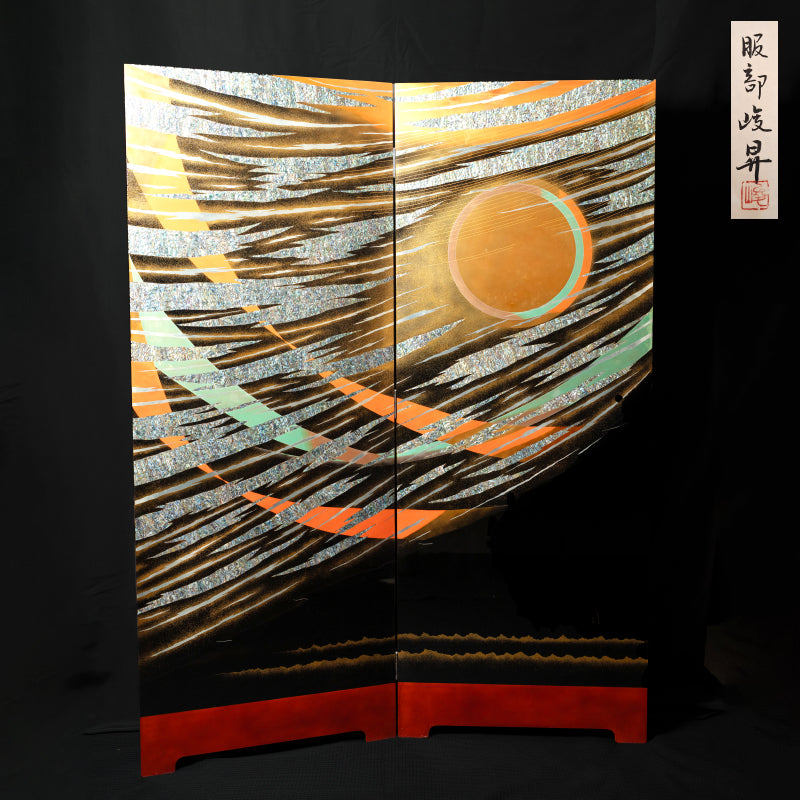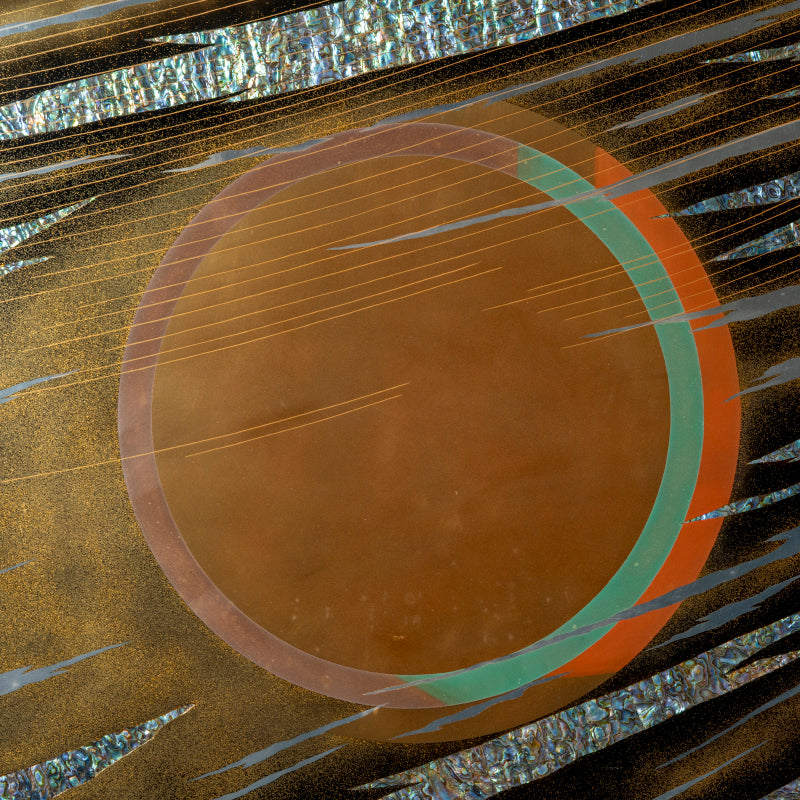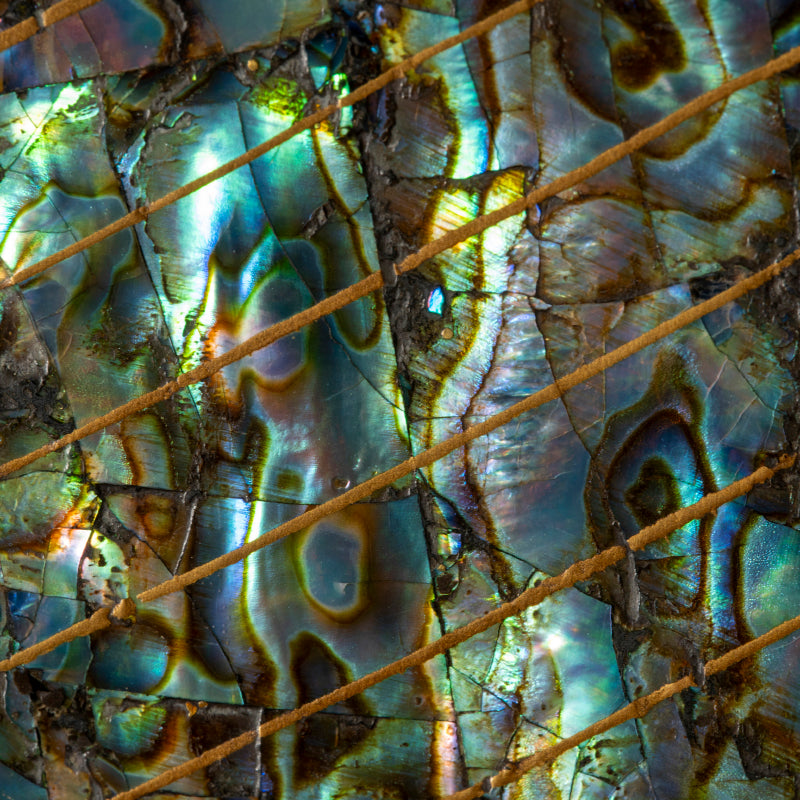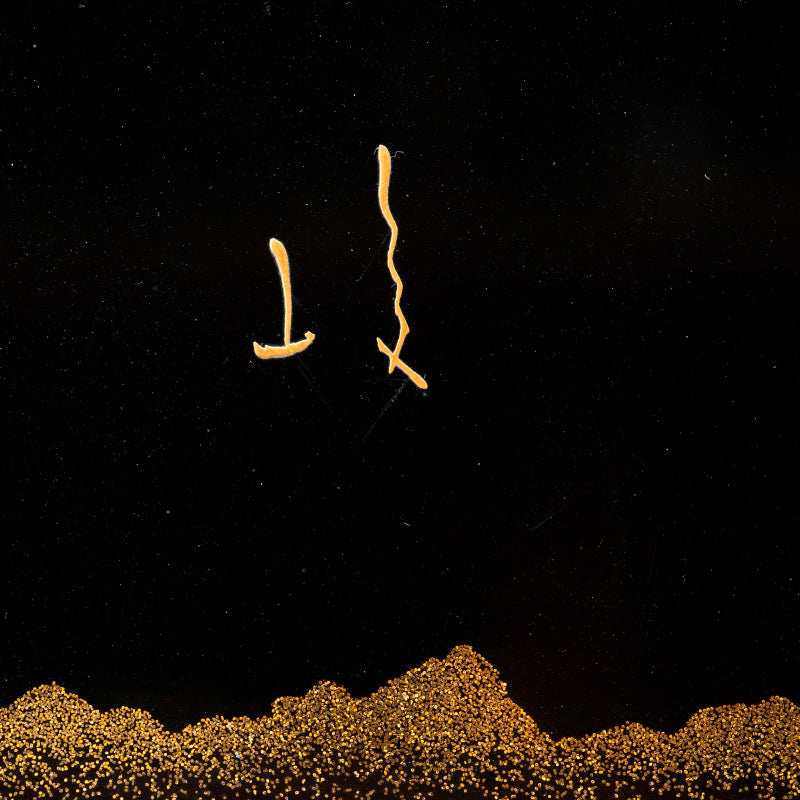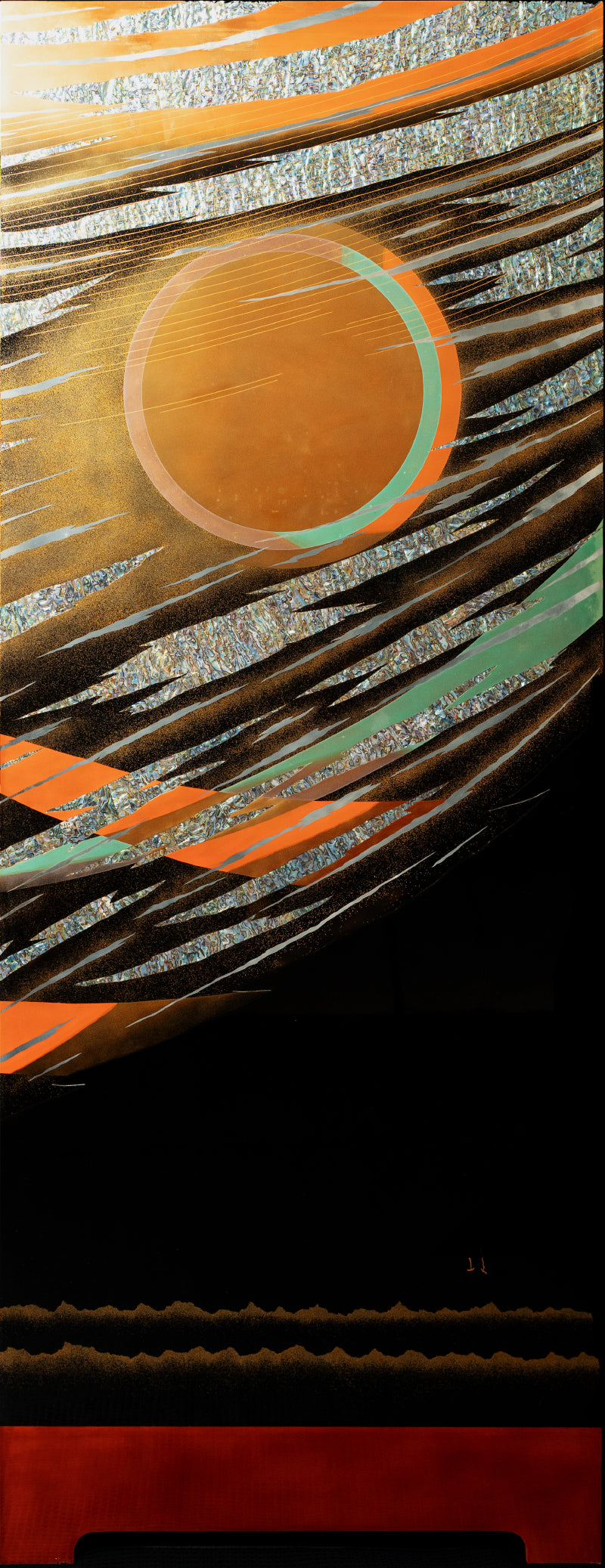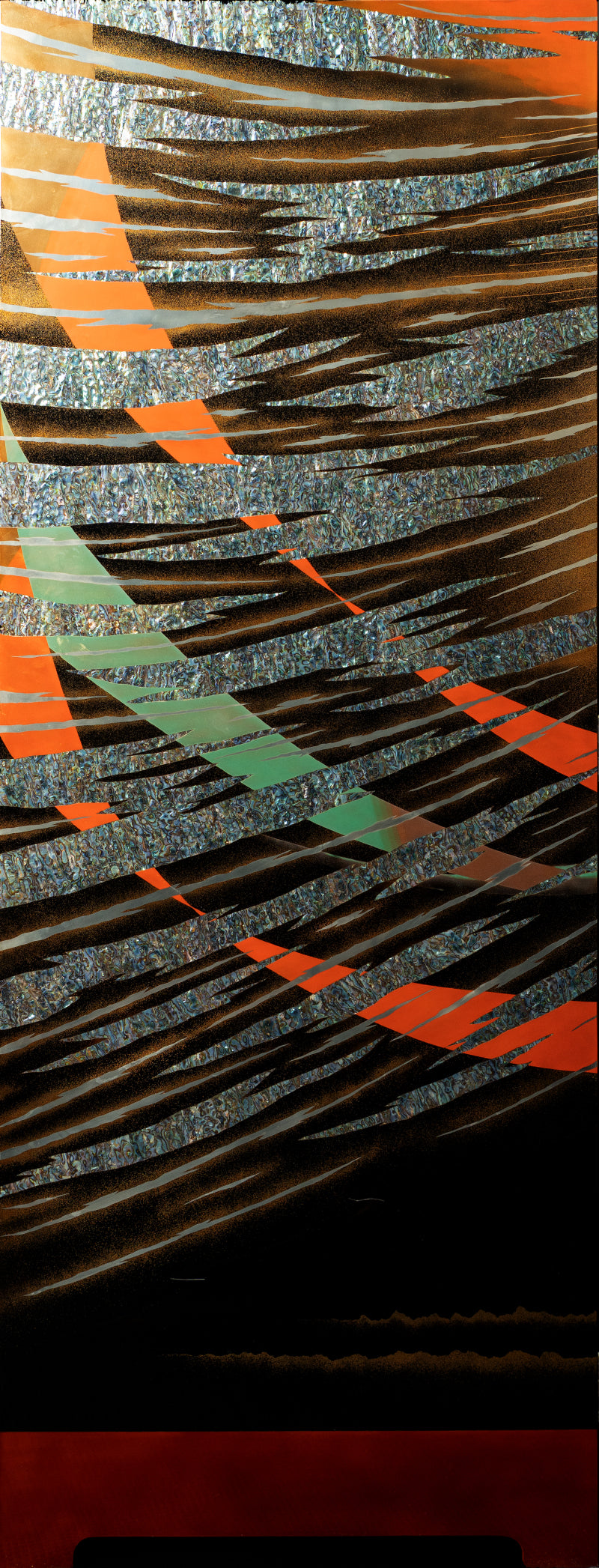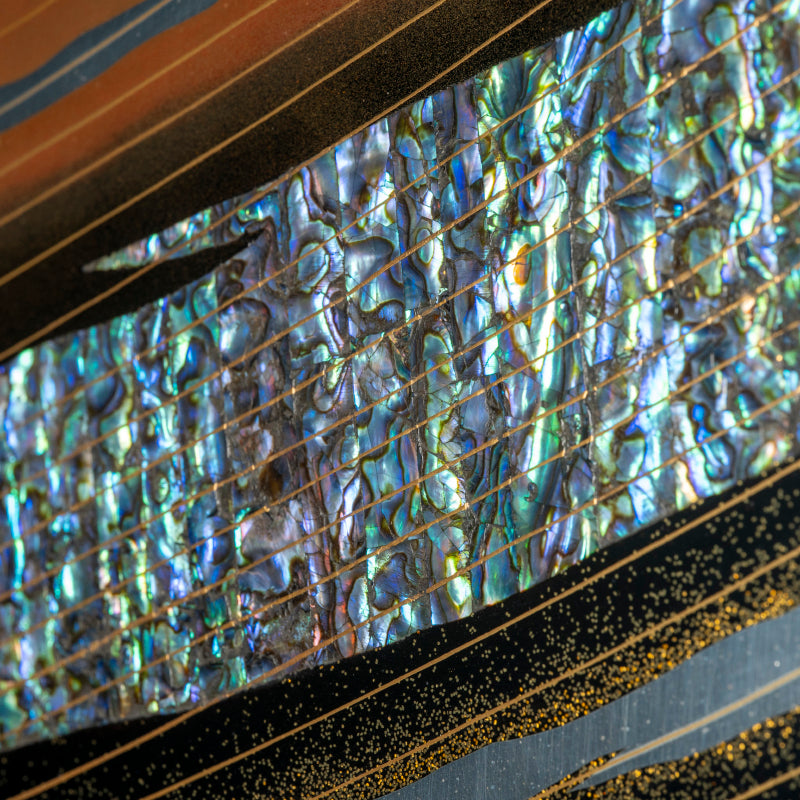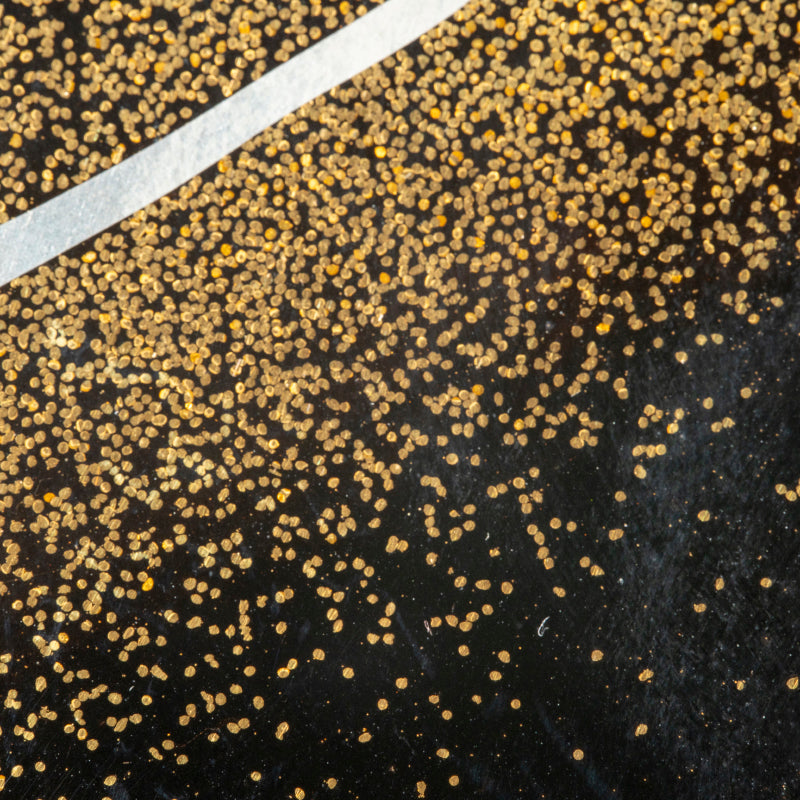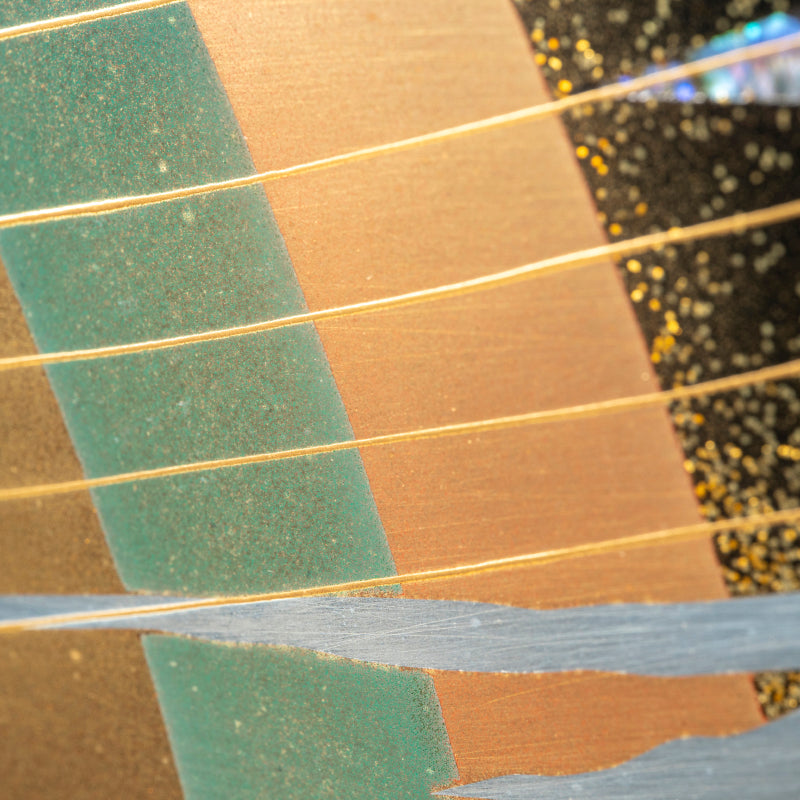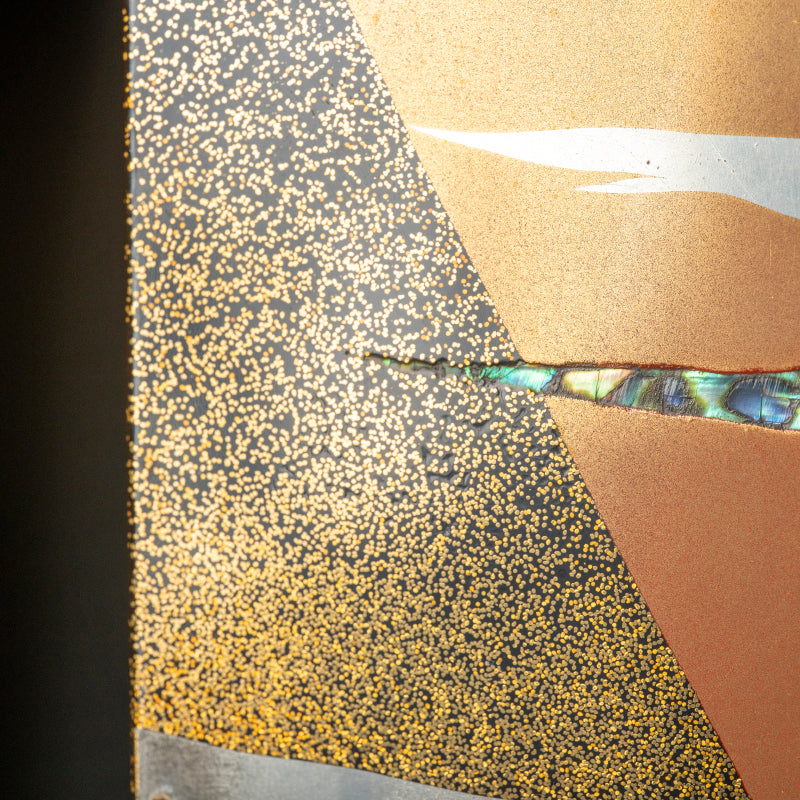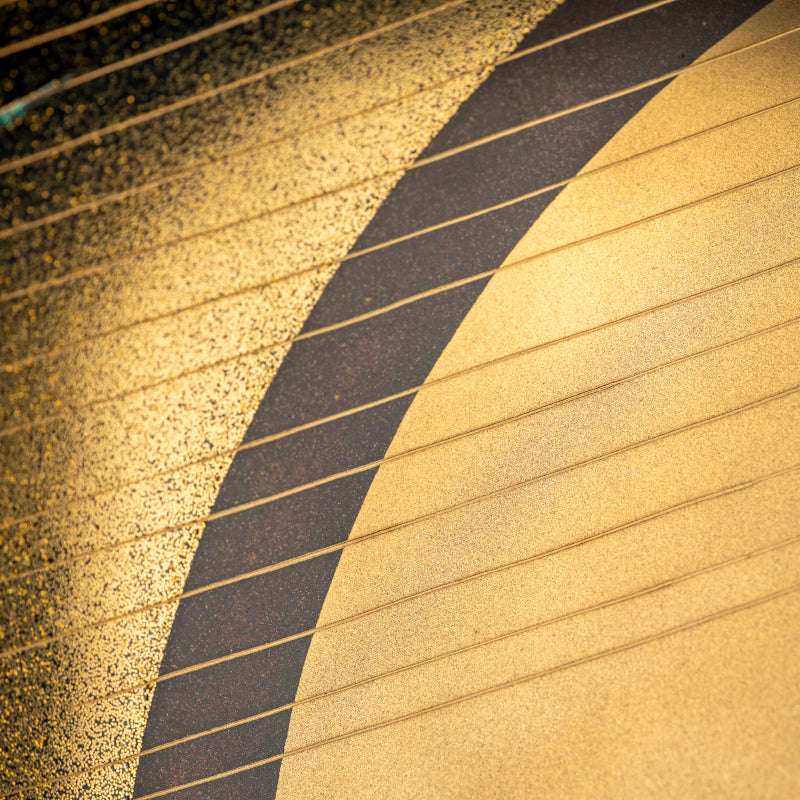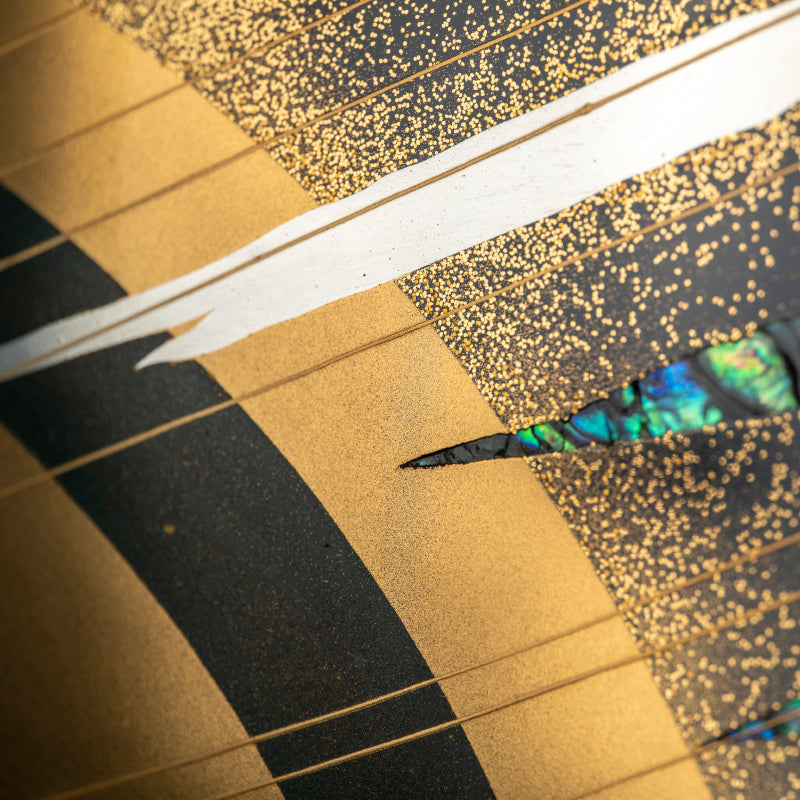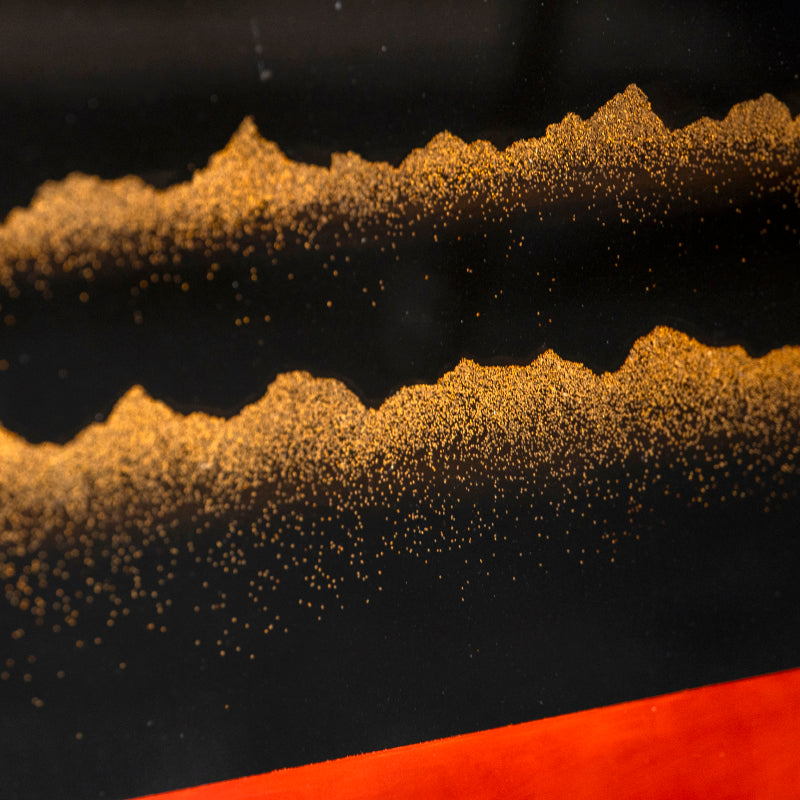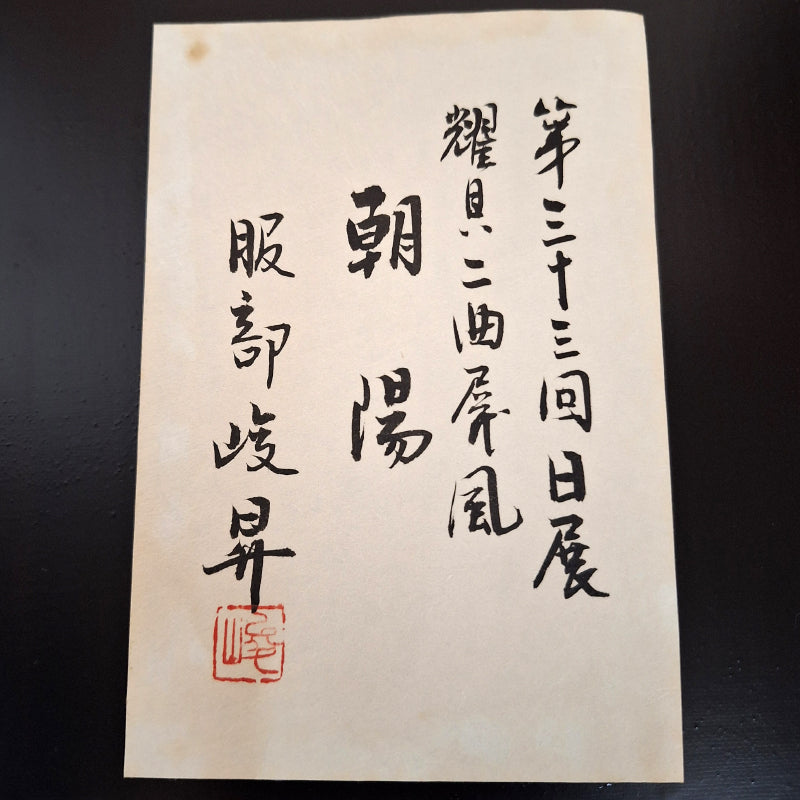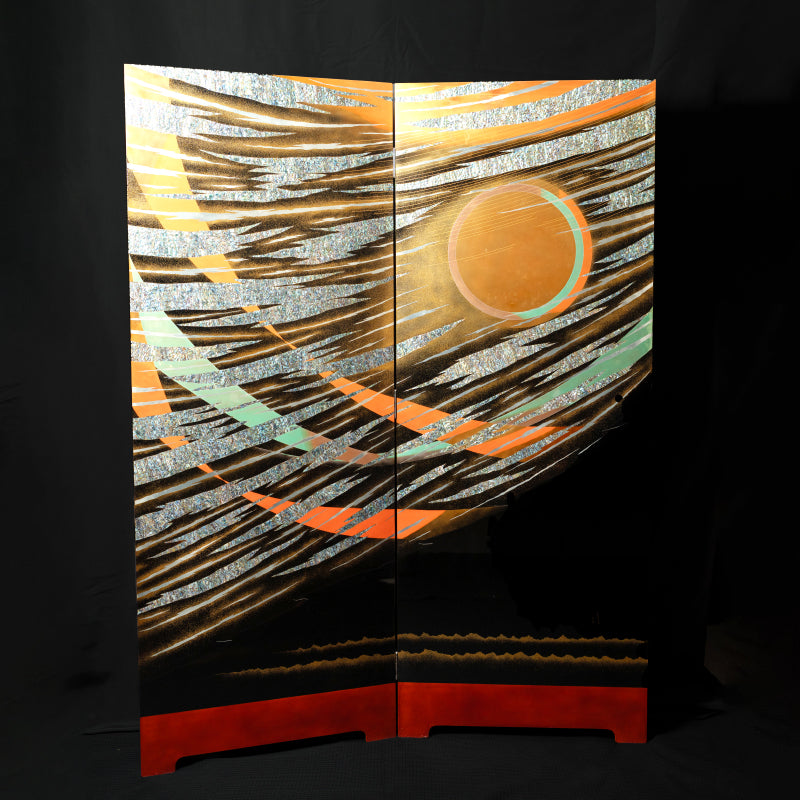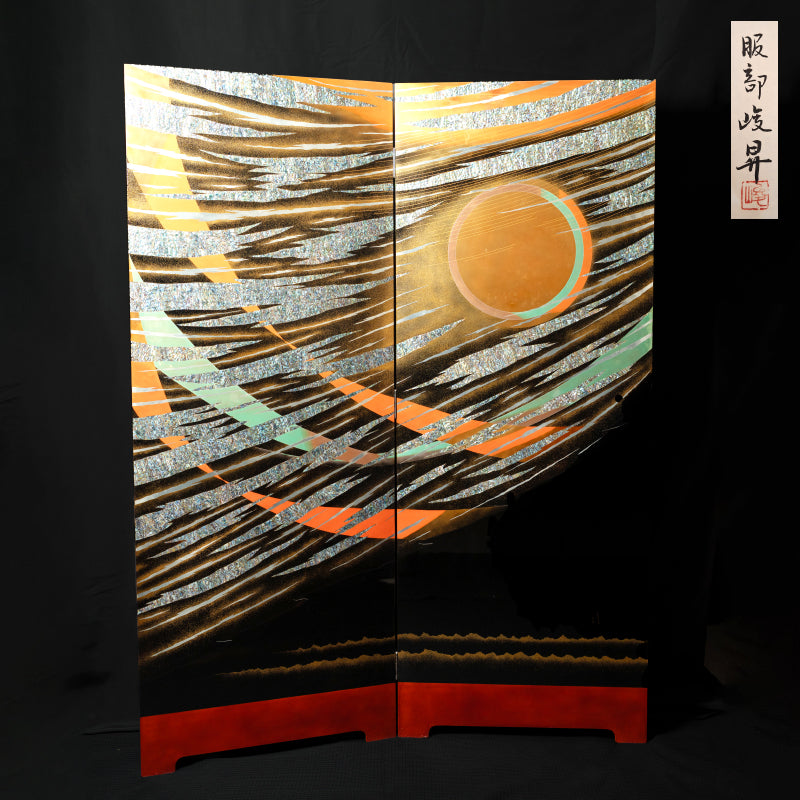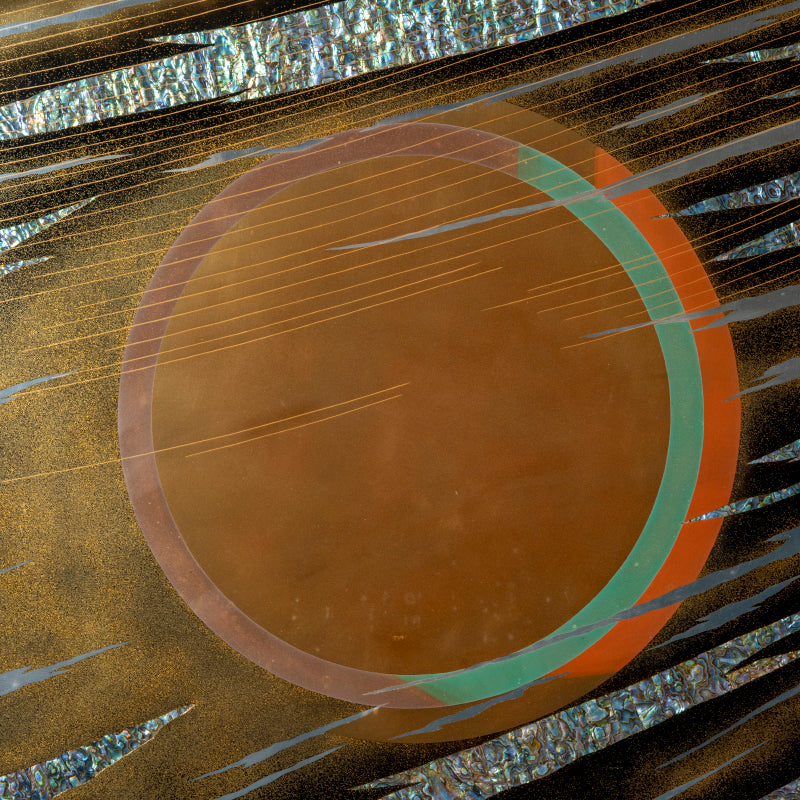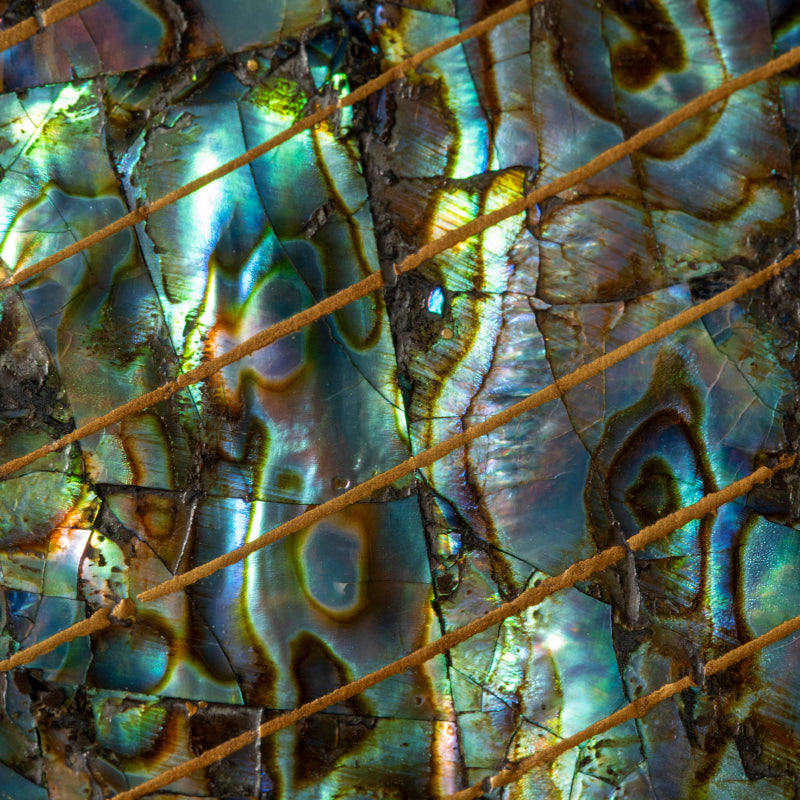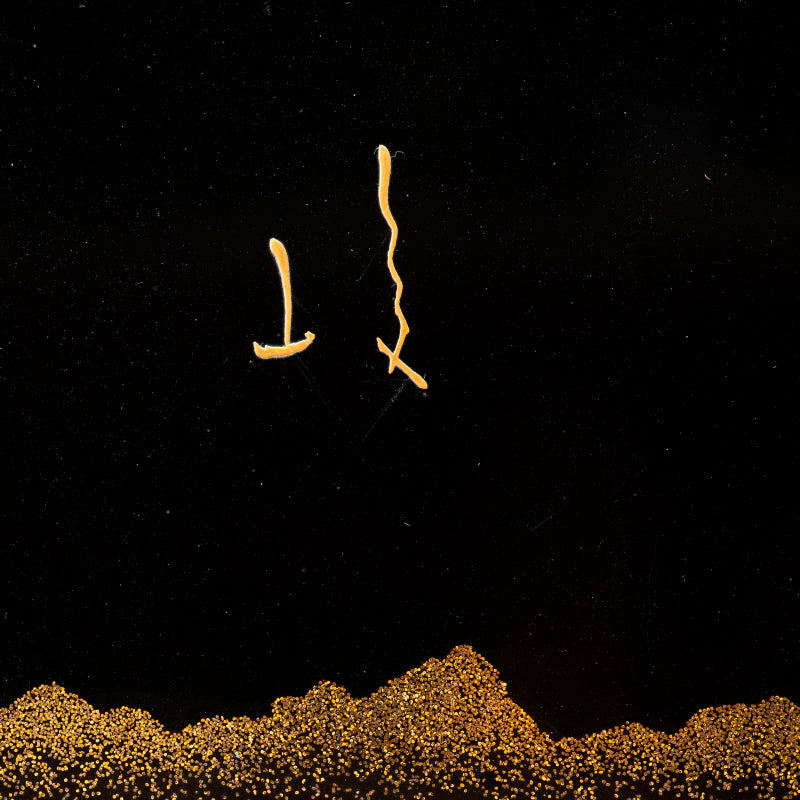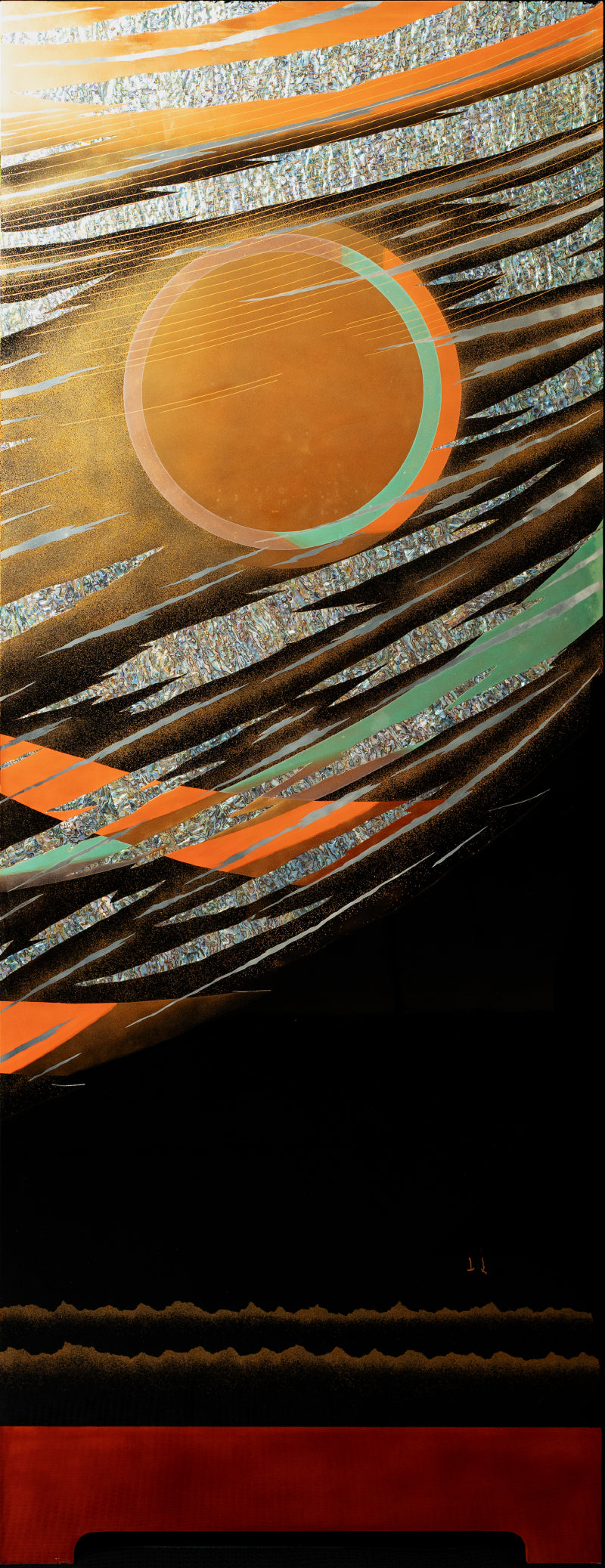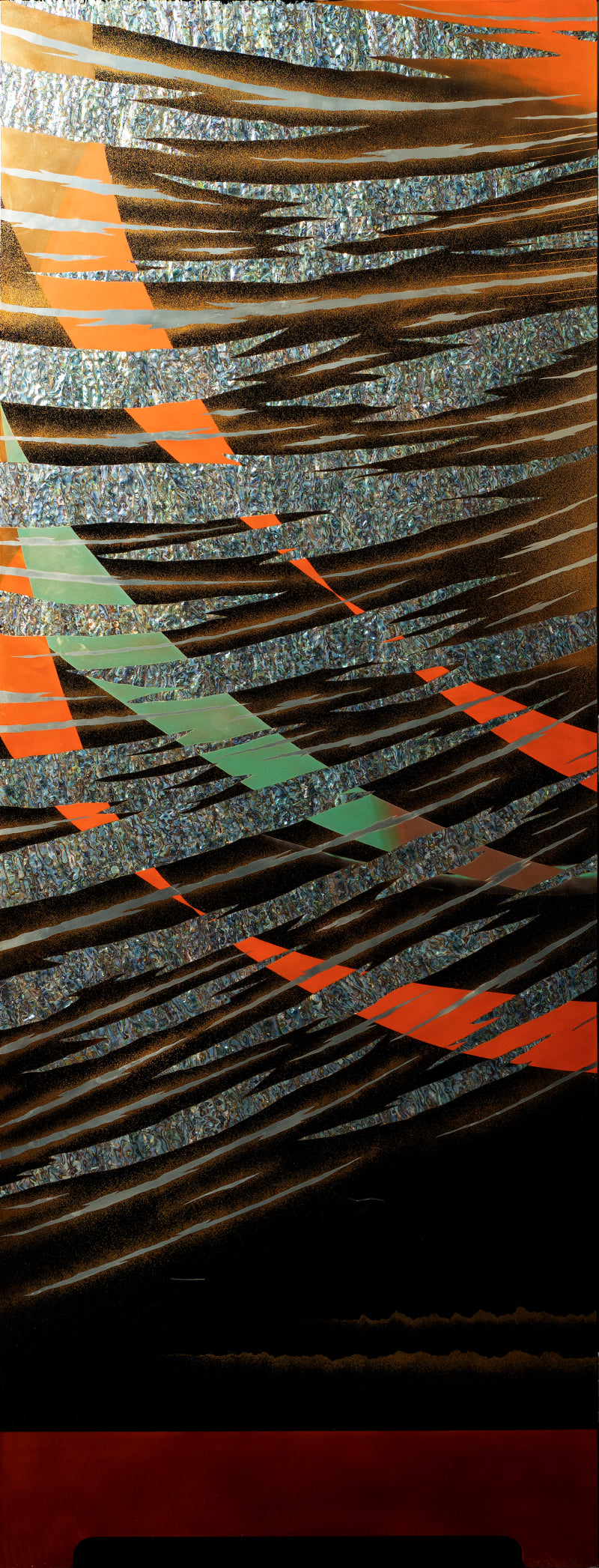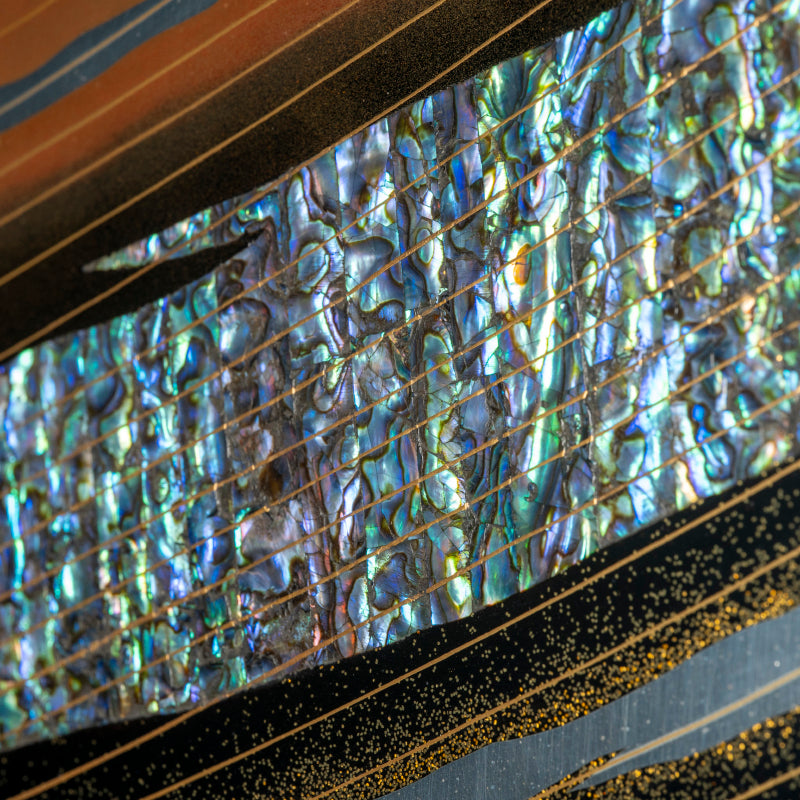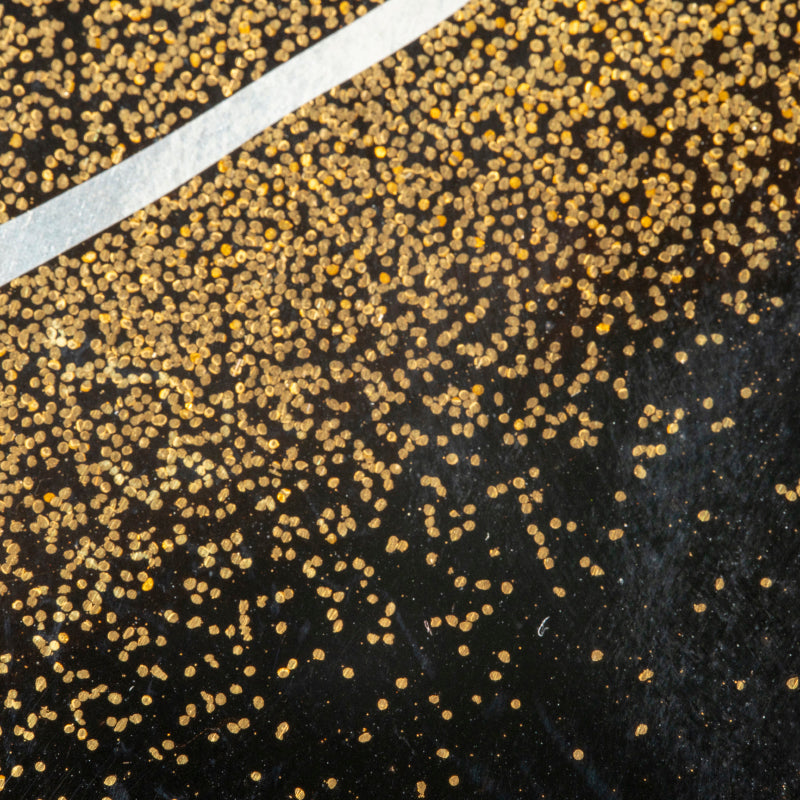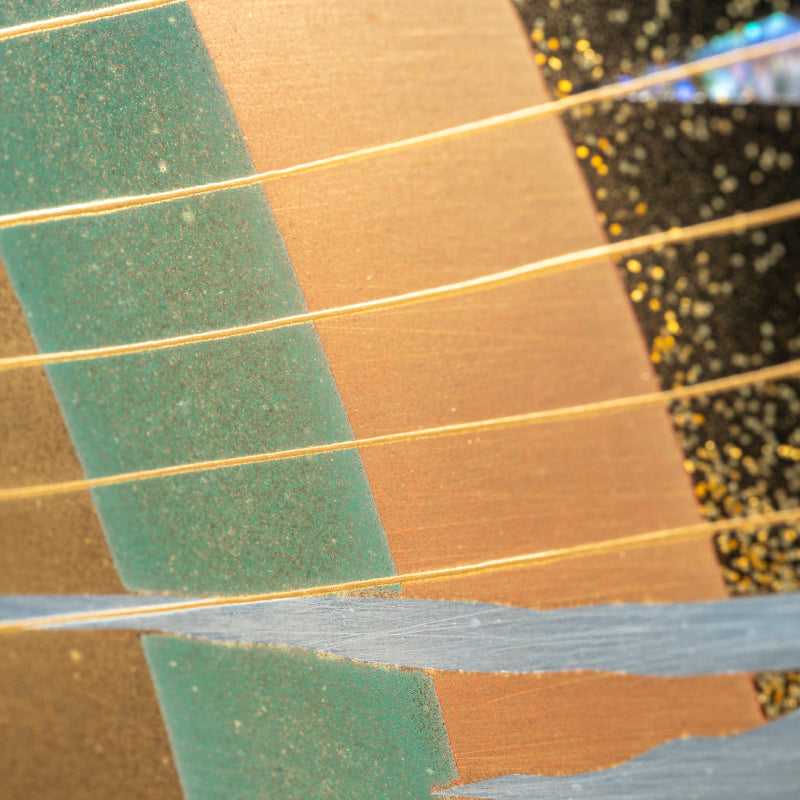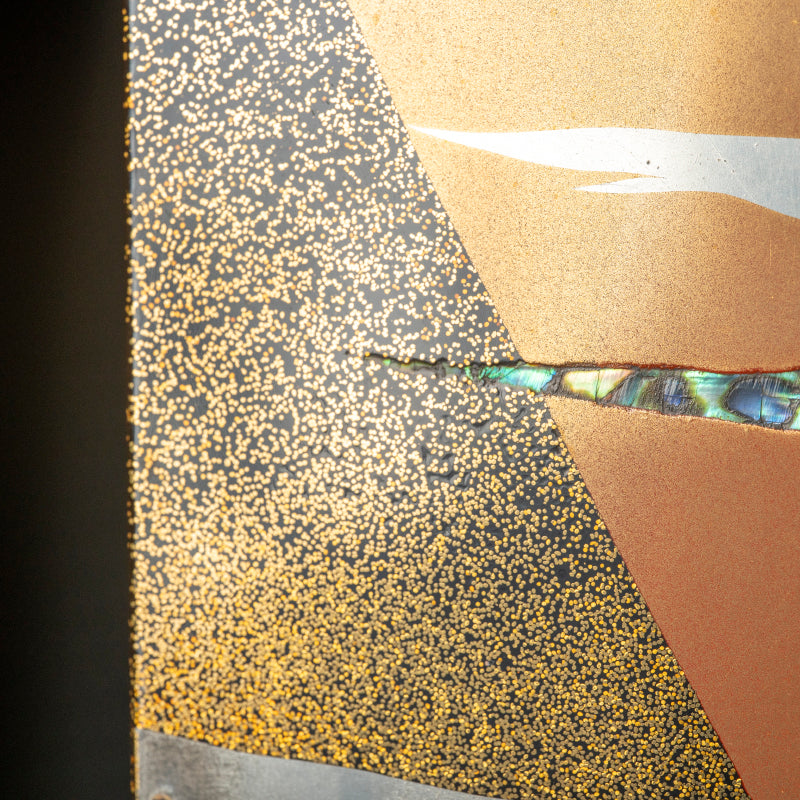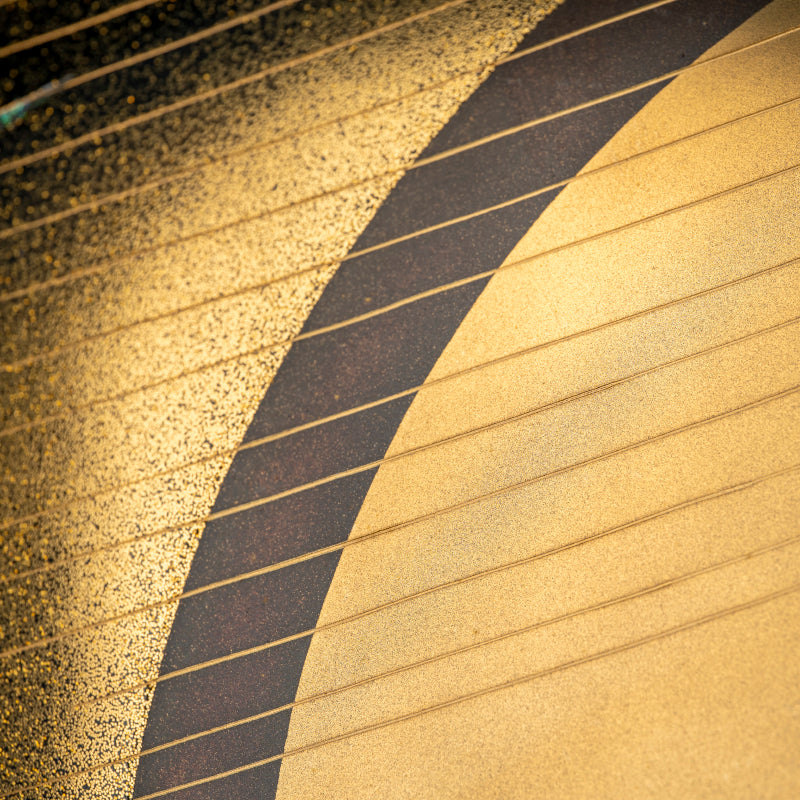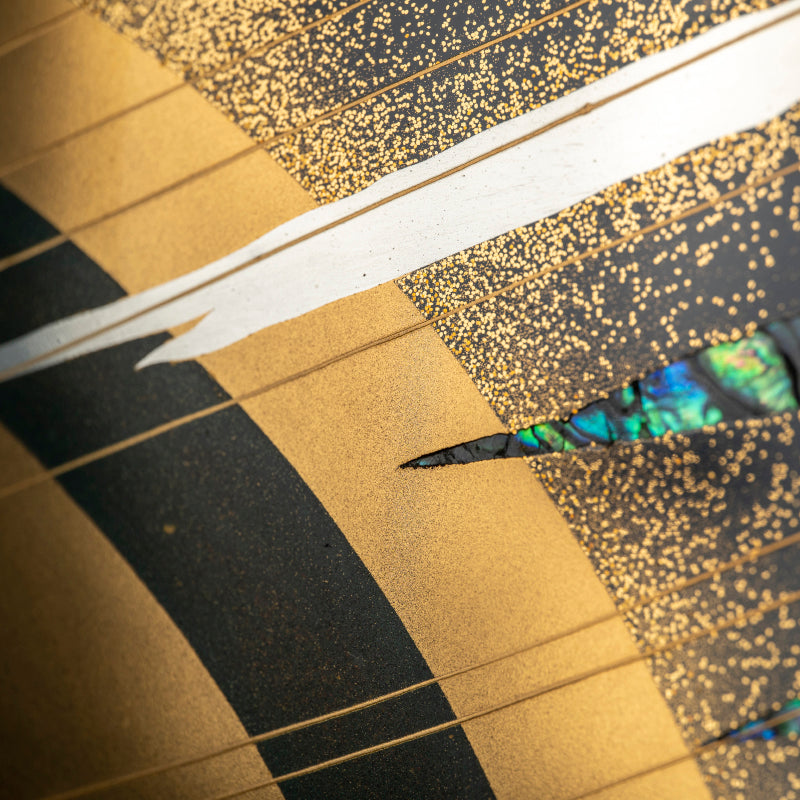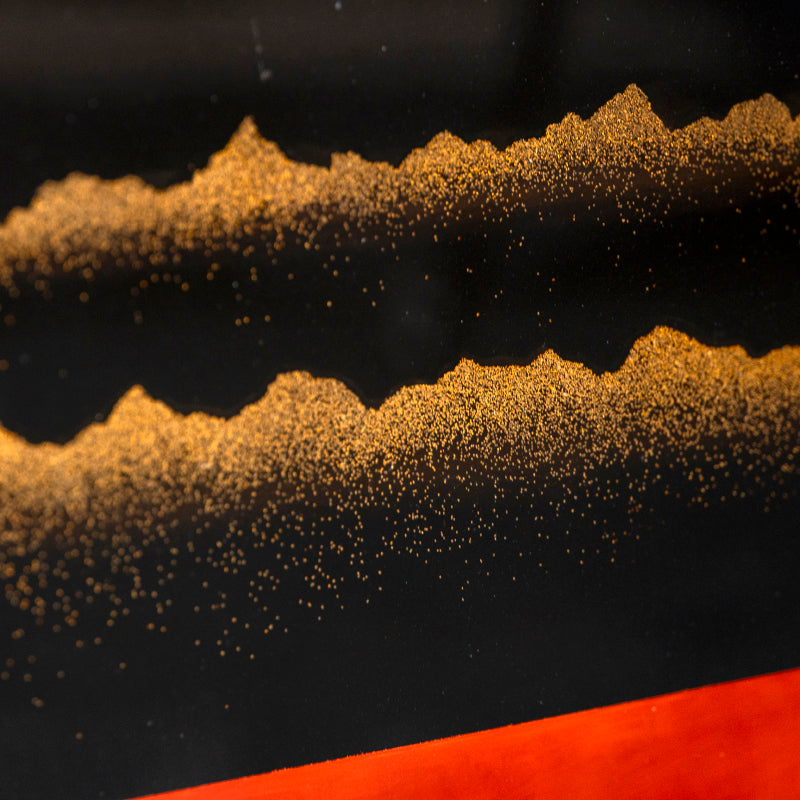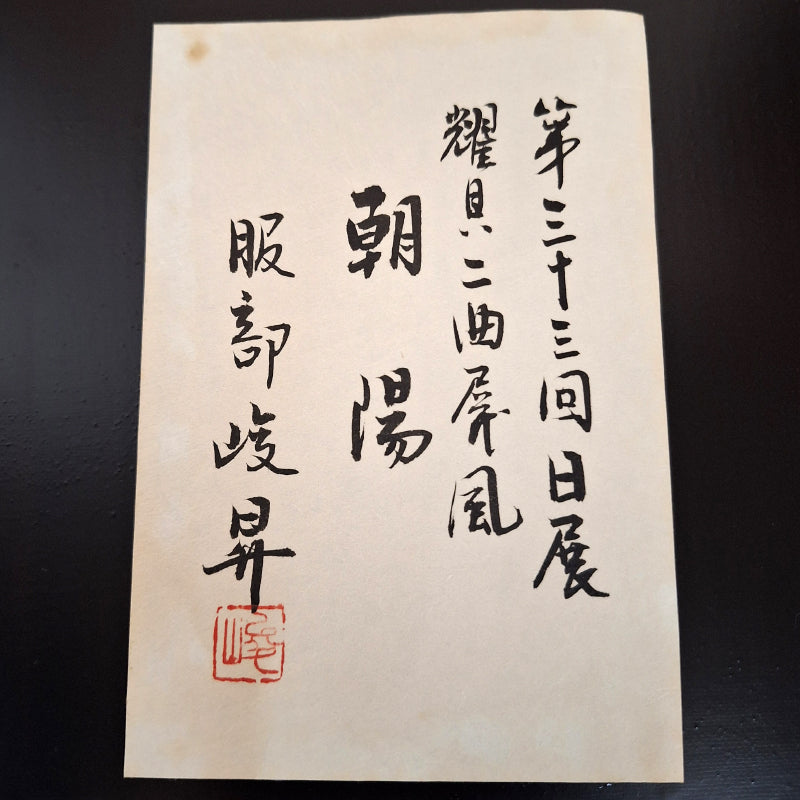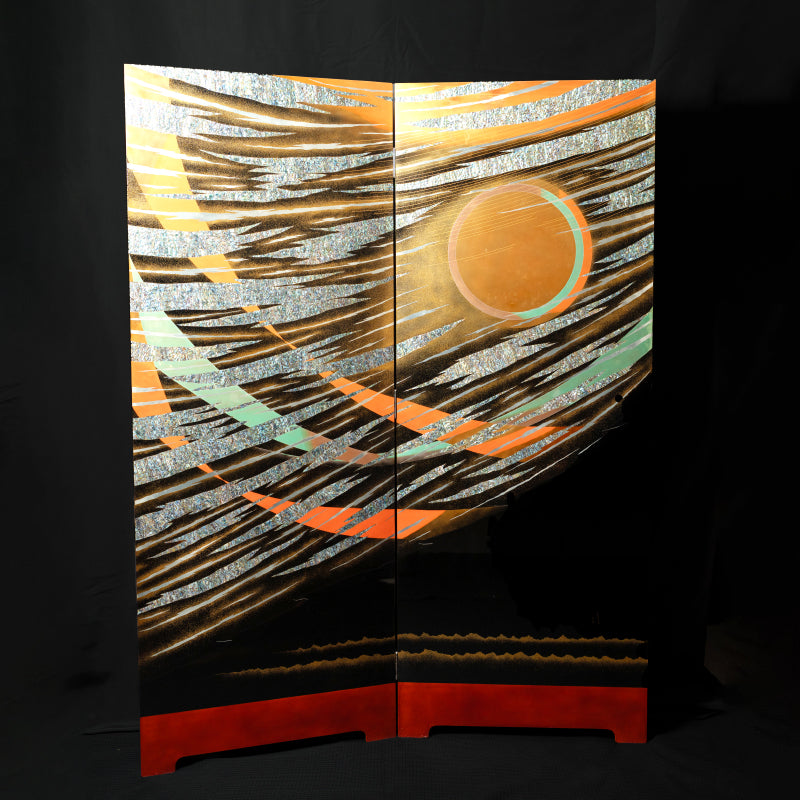2 Panel Lacquer Screen ー服部 峻昇 “耀貝二曲屏風 朝陽の響”
2 Panel Lacquer Screen ー服部 峻昇 “耀貝二曲屏風 朝陽の響”
Item Code: K743
Since this product is an oversized item that requires custom shipping, please send us a message with the delivery address and we will come back to you with a shipping quote.
お問い合わせフォーム
A brilliant two panel lacquered screen by Hattori Shunsho exhibited and awarded at the 33rd Nitten National Art Exhibition in 2002 titled Choyo (morning Sun). The hinged black lacquered panels are inlayed with polished metal and mother of pearl, covered in colored lacquers and gold powder. Each panel is 65 x 170 cm (25 x 67 inches) and is in overall excellent condition in a custom made storage box. There are a few minor air bubbles, scuffs and marks. For detailed photographs please inquire.
Due to the large size, additional shipping charges may apply.
Hattori Shunshō’s (1943–2018) artistic legacy lies not only in his command of traditional Japanese lacquer techniques but in his deep engagement with geometry as a tool for expression and transformation. His works are a compelling dialogue between centuries-old craft and modern design language, particularly through his inventive use of form, line, and material. Geometry, in Hattori’s oeuvre, transcends mere visual structure—it becomes a conduit for philosophical exploration, capturing the cyclical rhythms of nature and the structured abstraction of modernity. The moon and the sun, seasonal transitions, and the interplay of light on water are rendered through a design logic that blends mathematical clarity with poetic nuance. Throughout his career, Hattori embraced technological innovation as a creative partner rather than a threat to tradition. He was part of a postwar generation of artists who benefitted from—and actively explored—the expanded palette of materials and techniques made possible by advances in industrial production and global trade. Acrylics, synthetic lacquers, and modern adhesives were not simply substitutes for natural materials but opportunities to reimagine lacquer as a dynamic, contemporary medium. Hattori’s aesthetic vision is marked by the tension and harmony between symmetry and asymmetry, organic and artificial. Repeating motifs—spirals, waves, radial patterns—suggest both natural growth and human-made order. His geometric forms are often softened by the reflective, almost ethereal quality of the materials he chooses, creating a visual experience that is at once precise and deeply emotive. In this way, Hattori’s work stands as a bridge between the rooted elegance of Kyoto lacquer tradition and the boundary-pushing inquiries of contemporary art. His practice reveals that the evolution of craft is not a departure from the past, but a reinterpretation of it, made possible by the artist’s willingness to engage critically and creatively with the tools of his time.
Public Collections: Tokyo National Museum of Modern Art, Kyoto National Museum of Modern Art, Kyoto City Kyocera Museum, Kiyomizu Sannenzaka Musuem, Kyoto International Foundation, Chanoyu museum (Hida Takayama), Sunritz Hattori Museum of Arts, Denver Art Museum
Share
